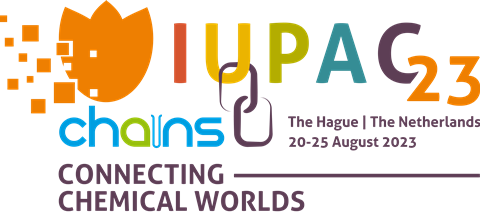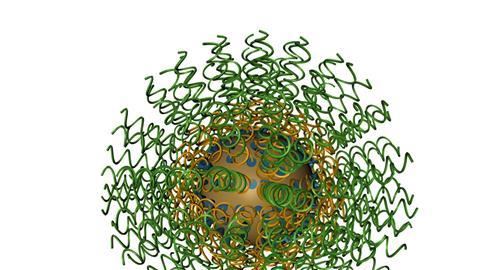Chad Mirkin uses nanotechnology to discover and develop new materials and structures that make a difference in people’s lives. He is one of the plenary speakers at IUPAC | CHAINS 2023. C2W International visited Mirkin to learn about the big promises of the very small.
The first thing you notice when you walk into Professor Chad Mirkin’s office at Northwestern University in Evanston, is the enormous wall-sized whiteboard. A big whiteboard for big ideas, because Mirkin doesn’t shy away from the great challenges of our time. According to him, the key to solving many of society’s problems lies in understanding the very small: nanotechnology. ‘When structured on the nanoscale, matter behaves differently’, Mirkin explains. ‘So, restructuring matter on this scale is a very powerful way to discover new properties and new possibilities.’

Right place, right time
Mirkin says he was in the right place at the right time when he started his career: ‘People had just introduced the chemistry and the surface analytical tools to study tiny structures. I wanted to use these tools to understand and control processes on the nanoscale, and develop unconventional ways to design, synthesize, and apply nanoscale structures.’
One of his big breakthroughs was the invention and development of so-called spherical nucleic acids (SNAs). Mirkin: ‘It was amazing that we could use chemistry and nanoscale matter to restructure DNA into an unnatural spherical nanostructure. This opened up a whole new range of possibilities.’ Unlike conventional DNA, SNAs can enter cells and bind more potently to targets, which makes them very useful in medical diagnostics and therapeutics.
Rational vaccinology
And the discovery also sparked another field of research: rational vaccinology. ‘Prior to our work there was little known about the importance of structure in vaccine design’, Mirkin says. ‘We showed that it is not just the components that matter, it is how you organize the components into a nanostructure. You can often significantly improve a vaccine or immunotherapy just by changing its structure.’
With this information at hand, Mirkin and his team have developed a highly efficacious COVID-19 vaccine and immunotherapies for seven different types of cancer. Each of these indications needs their own approach, although the researchers have found some trends for improving the effectiveness of a SNA drug in general: ‘We found that you need to put the signaling kinetics, antigen presentation and the immune stimulation, in sync with one another. There has to be a kinetic balance for the drug to work well.’
‘We used a scanning probe microscope tip as a manufacturing and synthesis tool’
World’s smallest pen
One of the other topics that Mirkin is very enthusiastic about is the design of megalibraries with the help of techniques he developed. ‘Dip-pen nanolithography was the first example. We used a scanning probe microscope tip as a manufacturing and synthesis tool’, Mirkin explains. ‘Now we have transformed this into a parallel tool.’
The system has evolved to feature an array of nanoscale elastomeric pyramids on a glass substrate, and the researchers can make new architectures using the tips of each of the pyramids. ‘We can for instance coat a polymeric material containing different ratios of metal ions on the array of pyramids. Under the right conditions, we can create little blobs of polymer that act as nanoreactors for the reduction of metal ions. Then we blow away the polymer and the reduced metal atoms come together to form one tiny particle for each blob, and each particle is different based on deliberate chemical design.’
One million pyramids
With this technique, Mirkin is developing a range of new materials. ‘There are 160.000 pyramids in an array, so we can synthesize an enormous number of different types of materials in a single experiment. These so called megalibraries contain more new discrete materials than scientists cumulatively have made to date.’ The next, very important step is screening the new materials: ‘It is possible to screen the entire chip for any chemical or physical property of interest, but you have to find the right techniques and conditions. It all takes time, but I’m convinced this field will explode in the next ten years, because we need new materials, and we need them fast.’
In the end Mirkin mainly hopes to make a difference in the world. ‘I think we are on the right track to really help people in cancer research, in energy and environmental science, and in a lot of other fields. We have put the chess pieces into place, now we just have to win the game.’
This article was created with support of the ’Trip Fonds’, which is managed by the VWN, Association for Science Journalism and Communication Netherlands.
In August 2023, Mirkin will be speaking at IUPAC | CHAINS 2023 in The Hague. He is excited to come to the Netherlands: ‘I don’t know what I’ll end up talking about, because the pace of research is moving so fast. But I do hope to inspire people with our latest results and connect with new people. These conferences are one of the best places to interact with the top chemists in the world, so I am looking forward to it.’














Nog geen opmerkingen